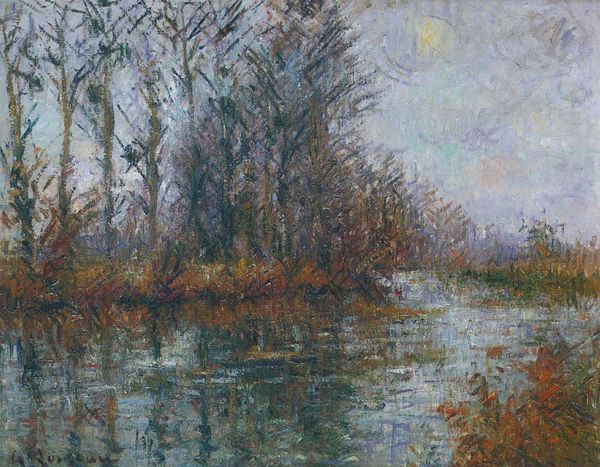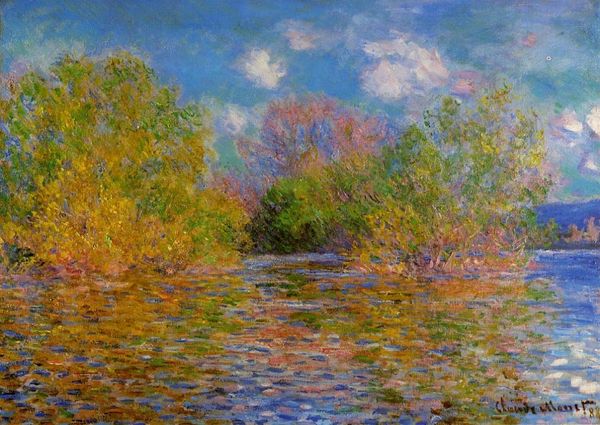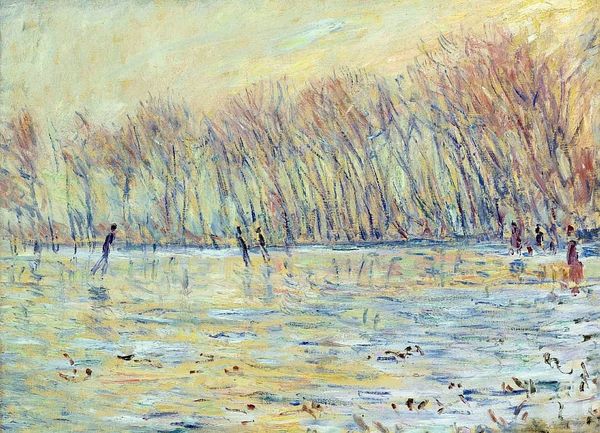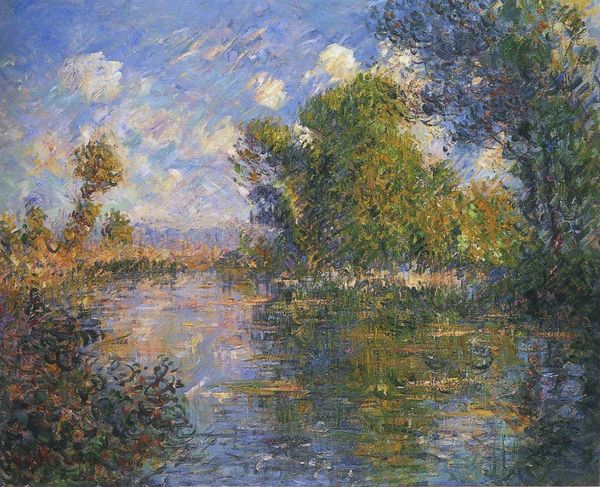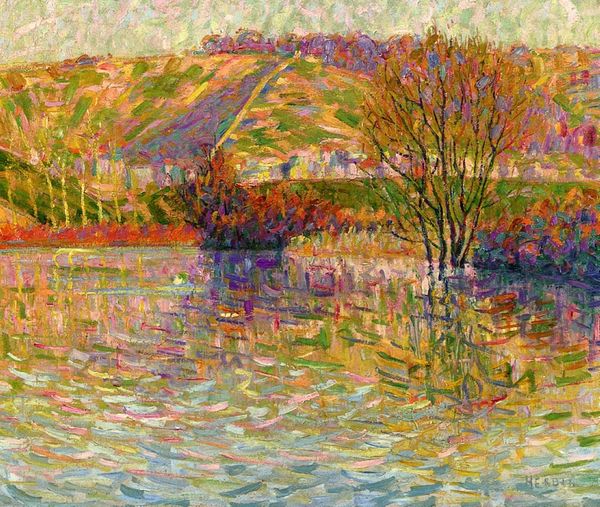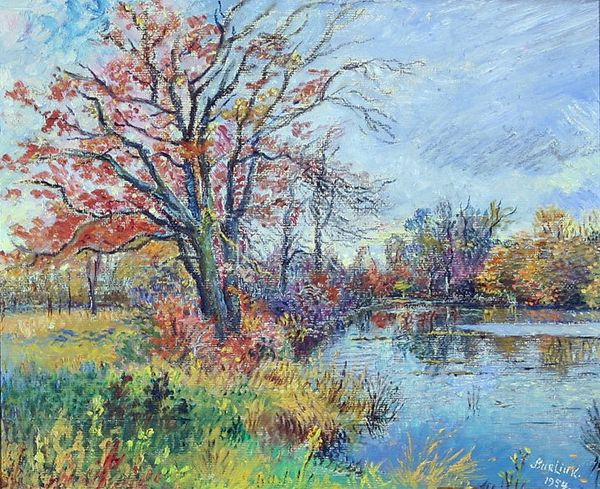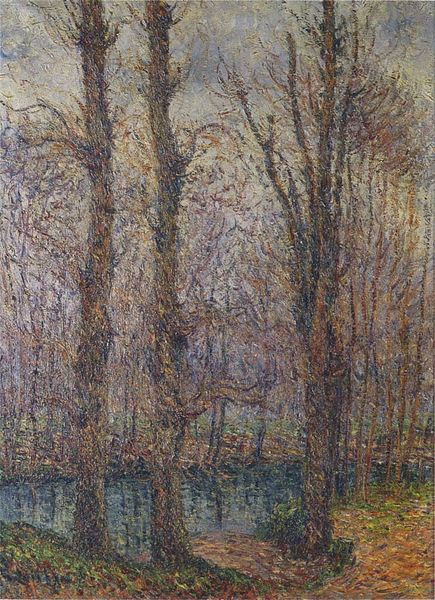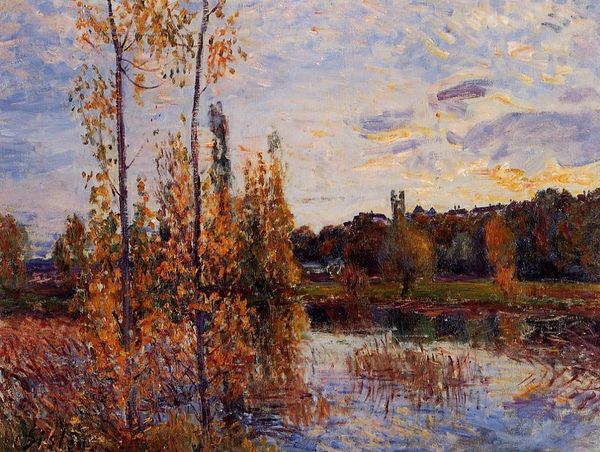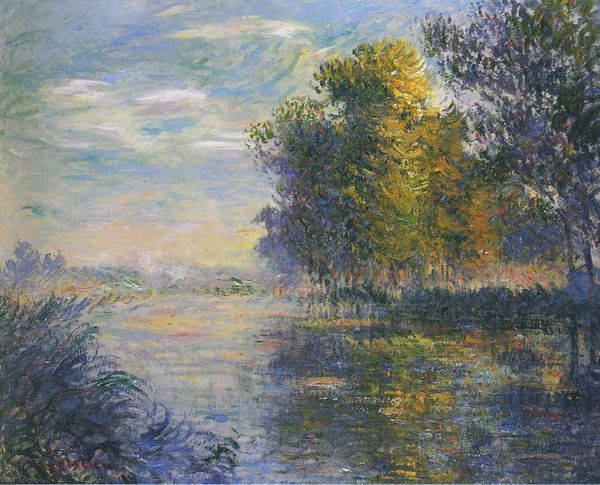
Copyright: Public domain
Claude Monet's "The Banks of the River Epte in Springtime," is painted with oils probably around his time living in Giverny, France. Monet's art challenges the traditional academic painting, moving away from historical or mythological narratives. Instead, he captures fleeting moments of nature, reflecting the rise of a new, modern sensibility. Impressionism, as a movement, can be seen as a reaction against the industrialization and urbanization of France, with artists turning to the natural world for solace and inspiration. Monet's focus on light and atmosphere can also be understood in the context of scientific advancements in optics and color theory. To fully appreciate Monet, it is necessary to study the social history of 19th-century France, examining the shifts in artistic patronage, the rise of the art market, and the changing relationship between the artist and society. Through this approach we understand the context of the artist and his work.
Comments
No comments
Be the first to comment and join the conversation on the ultimate creative platform.
